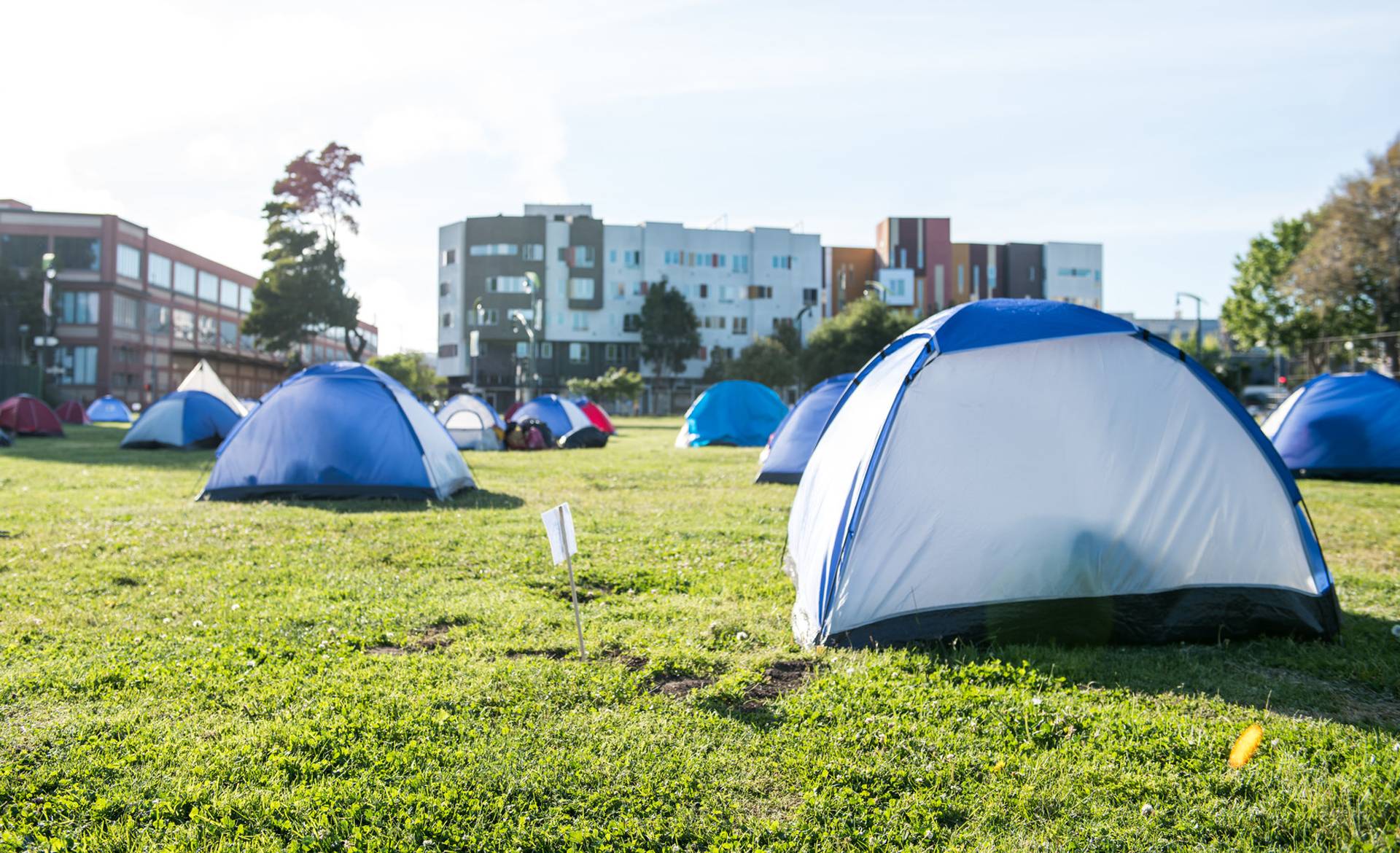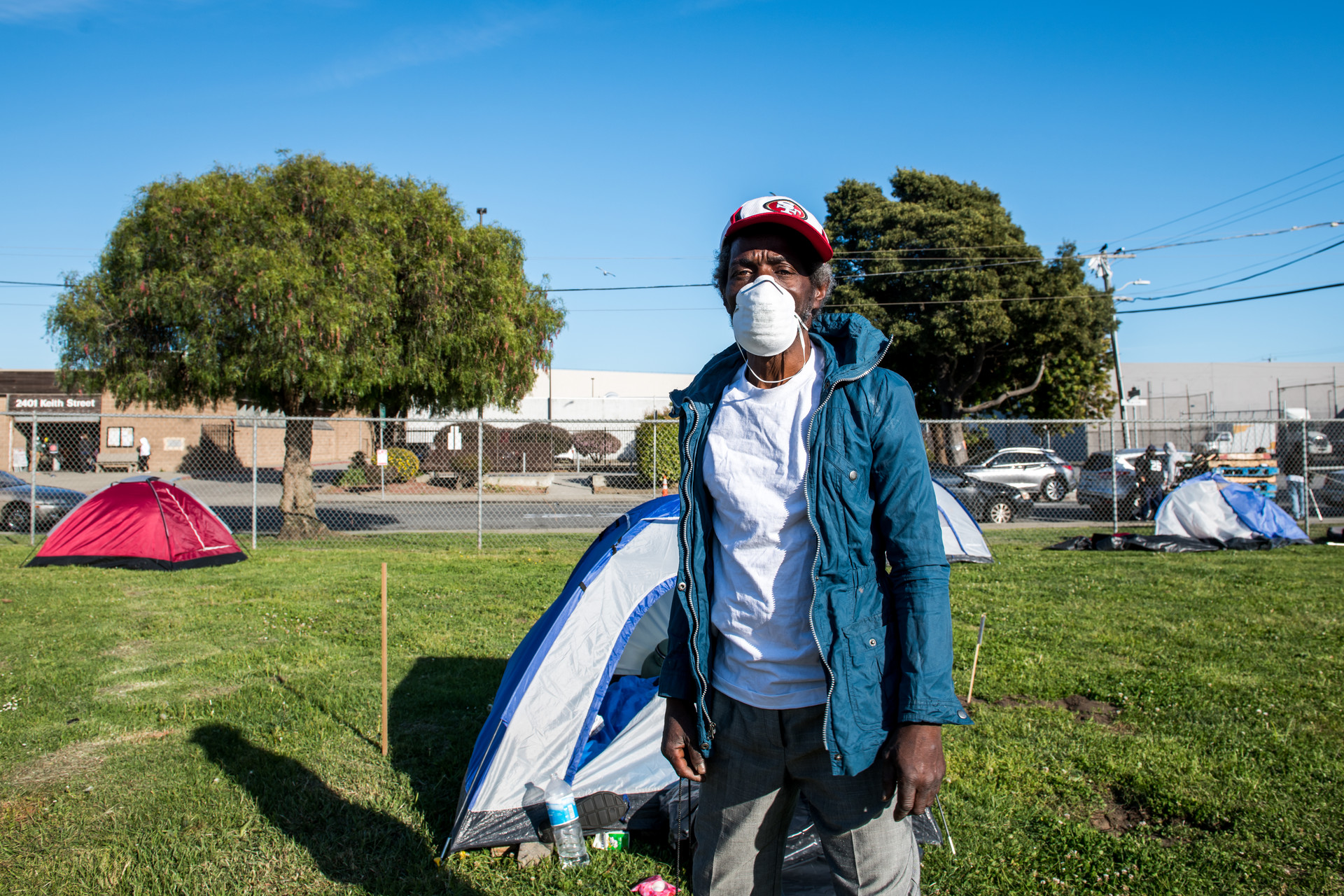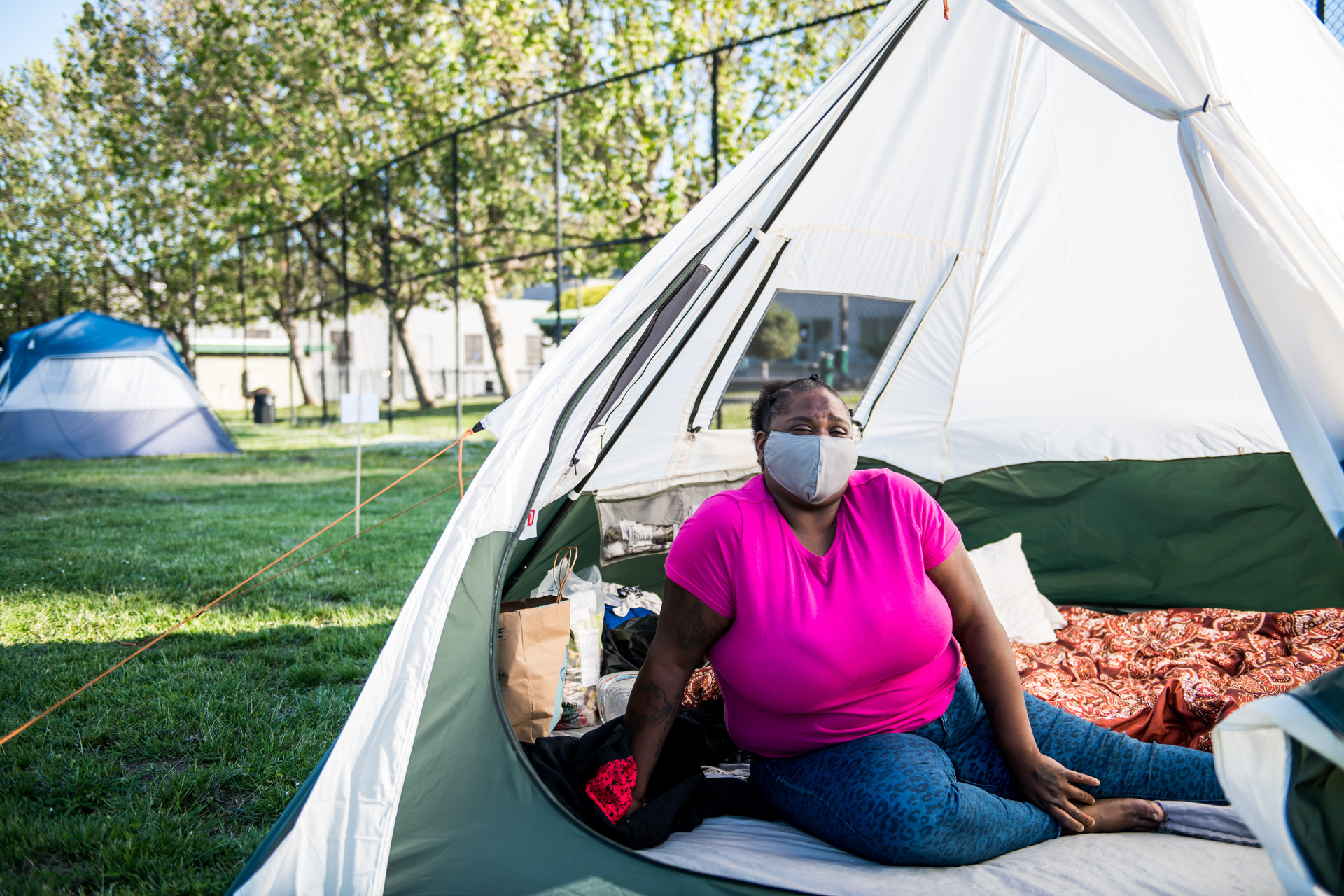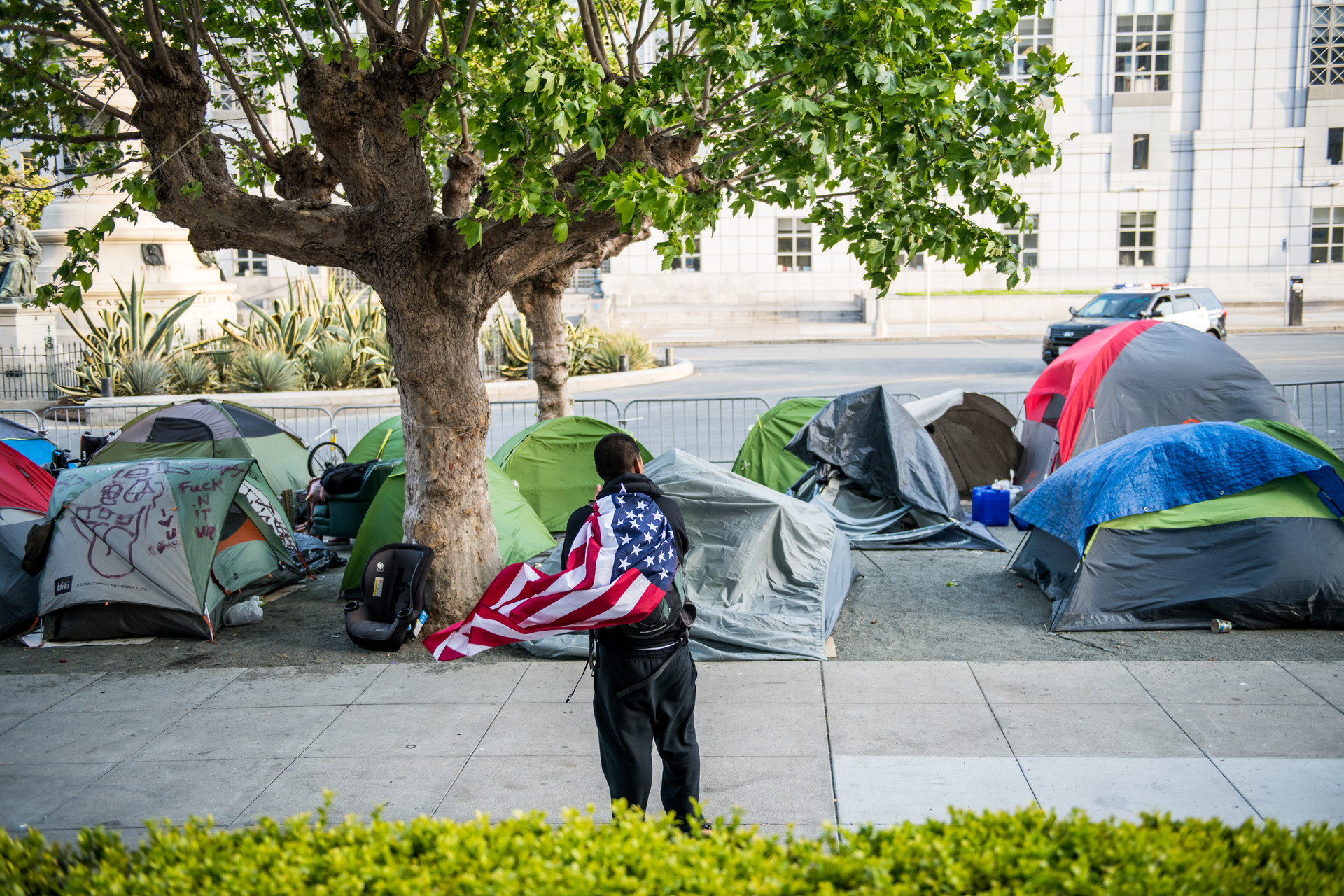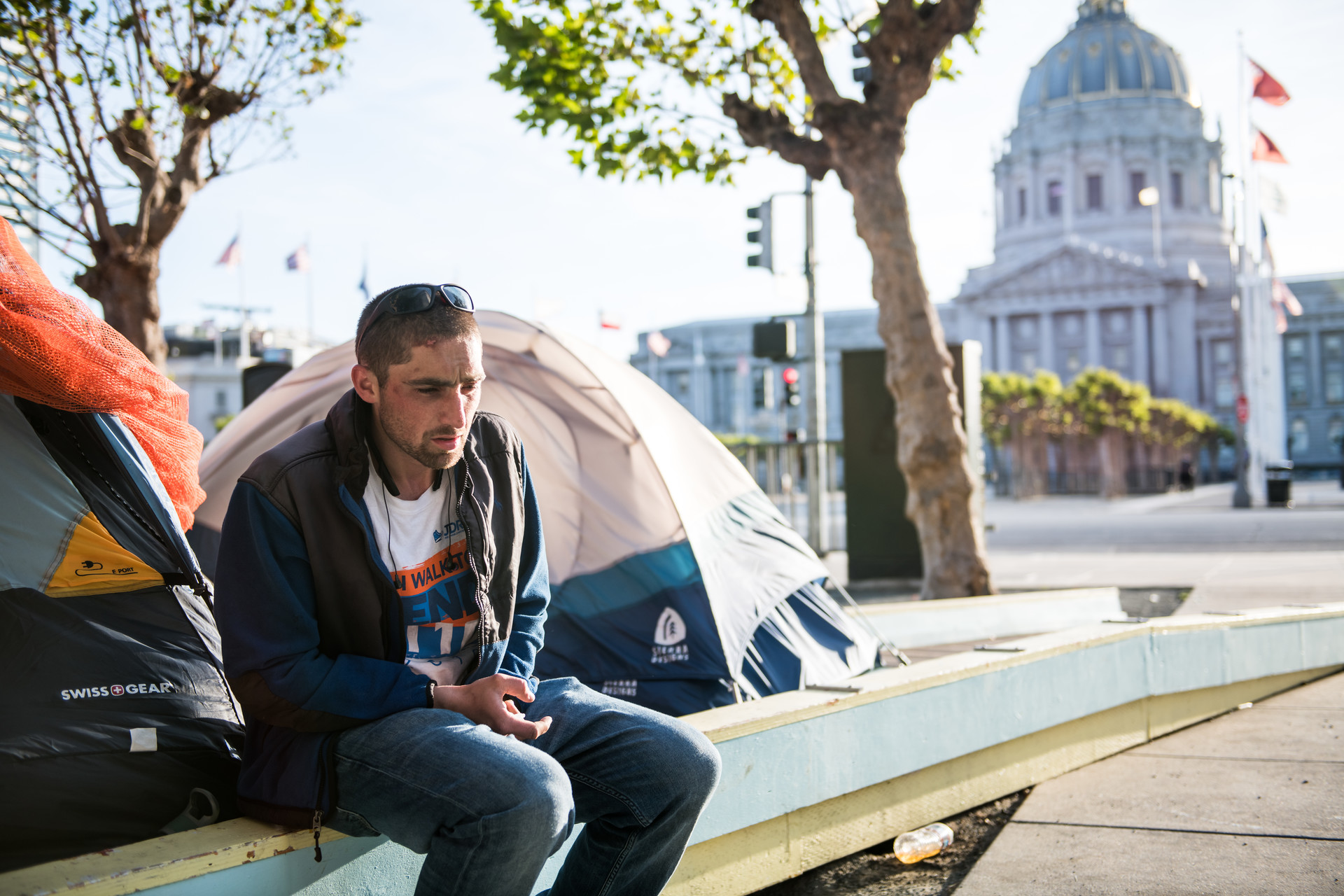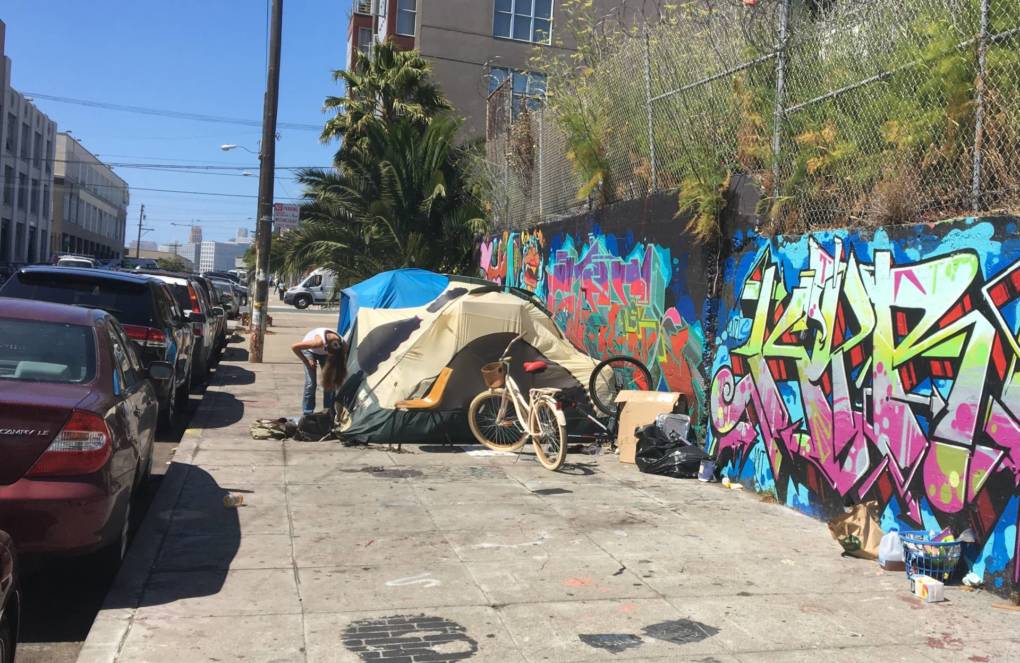San Francisco is set to enact a homelessness solution it once thought unthinkable: city-sanctioned open-air encampments.
For years, San Francisco police have ordered tents removed from city streets, even at times slashing them with knives themselves. Public Works employees have tossed the ever-ubiquitous nylon homes of desperate people into dump trucks on a weekly basis.
This week, however, San Francisco will launch the first of five planned “Safe Sleeping Sites,” KQED News has confirmed, with the hope that unhoused people will be kept socially distant amid the COVID-19 pandemic in a controlled location, replete with services like showers and food.
Tents, once an ultimate bogeyman of San Francisco’s government, will be revered as lifesaving.
The first location was announced Wednesday by Mayor London Breed: an encampment of roughly 90 tents piled nearly on top of each other near the Asian Art Museum – on City Hall’s front doorstep – will be officially sanctioned and allowed to expand onto Fulton Street, between the museum and the Main Library.
Safe, healthy, social distance will finally come to Civic Center’s homeless.
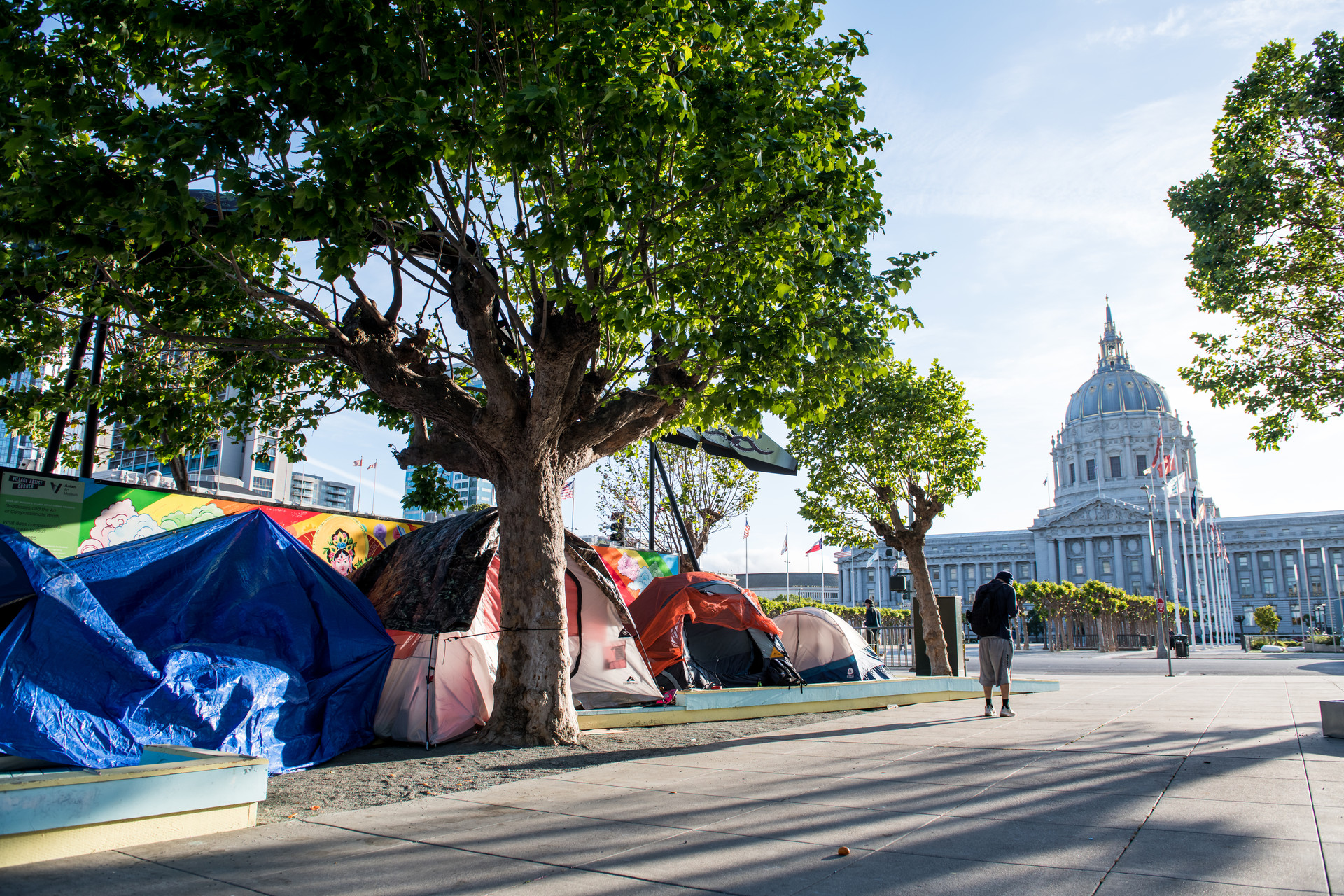
The second city-sanctioned safe sleeping site is already under operation by a local nonprofit, Mother Brown’s Dining Room in the Bayview, at a park known locally as MLK Park, on Third Street and Armstrong Avenue.
For now it’s a rogue operation, but later this week the official OK from San Francisco City Hall will see services, showers and other resources blow in like a breeze under the sails of that existing effort, Gwendolyn Westbrook, Mother Brown’s executive director told KQED News.
Those wrap-around services are planned for all of the city-sanctioned sleeping sites.
“I went into the park and set up the tents,” said Westbrook, who had help from Bayview advocates Gloria Berry and Michelle Pierce. “The city left us alone, and now, as a matter of fact, they’re going to help us a lot.”
Three other sites are now under various phases of negotiation to potentially become San Francisco’s next wave of safe sleeping sites, public documents and City Hall insiders confirmed:
- The former Temporary Transbay Terminal at Howard and Main streets
- Everett Middle School on Church Street
- A former McDonald’s restaurant on Haight and Stanyan streets near an entrance to Golden Gate Park
Bayview Neighbors United
Mother Brown’s shelter, nestled on Jennings Street and Van Dyke Avenue in the Bayview, sees nearly 70 people sleeping in it nightly. Westbrook, the shelter’s proprietor, said homelessness has grown in the Bayview so precipitously that people sometimes sleep in Mother Brown’s dining room and hallways.
But the COVID-19 pandemic has required many San Francisco establishments to close, or maintain strict social distancing, and Mother Brown’s shelter was no different.
